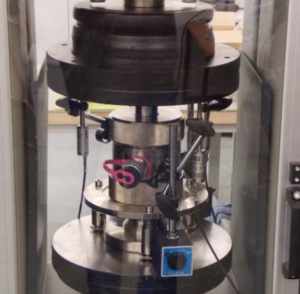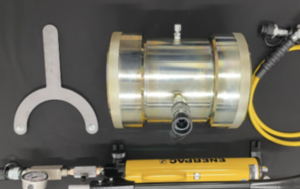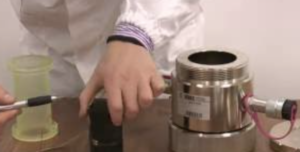How Do Soil Microbial Activity Tests Benefit Landscape Ecosystem Restoration?
In landscape ecosystem restoration, soil health1 is often the key to success. Microbial communities within the soil play a pivotal role in nutrient cycling, soil structure, and the overall resilience of restored landscapes. By using soil microbial activity tests2, we can evaluate and guide soil improvements, fostering environments that support diverse plant life and healthy ecosystems. These tests offer insights into the hidden world of soil organisms, helping to optimize restoration strategies3 for long-term sustainability.
Assessing Soil Microbial Communities in Disturbed Landscape Areas
In disturbed landscapes—such as those impacted by construction, deforestation, or pollution—soil microbial populations often decrease4, which can hinder soil recovery and plant growth. Soil microbial activity tests measure the diversity and abundance of bacteria, fungi, and other soil organisms5, providing a snapshot of the soil’s biological health.
Key Parameters Measured in Microbial Activity Tests:
- Microbial biomass: The total mass of living microbes in the soil.
- Enzyme activity: Indicates the breakdown of organic materials and nutrient cycling.
- Microbial diversity: A diverse microbial community is crucial for soil health and ecosystem stability.
- Respiration rates: Measure the soil’s metabolic activity, which is indicative of overall microbial health.
Microbial Activity Data Example
| Soil Condition | Microbial Biomass (µg/g) | Enzyme Activity (µg/g/day) | Bacterial Diversity |
|---|---|---|---|
| Restored Forest | 250 | 20 | High |
| Urbanized Area | 150 | 10 | Low |
| Agricultural Soil | 200 | 15 | Medium |
These tests give restoration ecologists a baseline for how soil biological communities are recovering or if intervention is needed.

The Role of Microbes in Nutrient Cycling and Soil Structure Improvement
Microbes are the unsung heroes6 of soil fertility. They are responsible for breaking down organic matter, recycling nutrients, and improving soil structure7. Microbial activity influences soil aggregation, which in turn affects water retention, aeration, and root growth. By enhancing soil microbial health8, restoration projects can speed up the return of soil function and improve plant establishment.
Key Microbial Functions:
- Nitrogen fixation: Certain soil microbes convert atmospheric nitrogen into forms plants can use.
- Decomposition: Microbes break down dead plant material, releasing carbon, nitrogen, and other nutrients back into the soil.
- Soil aggregation: Microbes produce substances that bind soil particles together, improving soil structure.
- Phosphorus mobilization: Fungi like Mycorrhizae help plants access hard-to-get phosphorus.
Impact of Microbial Activity on Soil Properties
| Microbial Function | Effect on Soil | Impact on Plant Growth |
|---|---|---|
| Nitrogen Fixation | Increases nitrogen availability | Supports leafy growth |
| Decomposition | Releases nutrients (e.g., nitrogen, carbon) | Enhances soil fertility |
| Soil Aggregation | Improves soil structure and porosity | Facilitates root penetration |
| Phosphorus Mobilization | Makes phosphorus more available | Boosts root development and flowering |
These microbial processes are essential for creating soils capable of supporting healthy plants.

Using Microbial Activity Test Results to Select Appropriate Cover Crops
When restoring a disturbed landscape, cover crops are often used to help stabilize soil, prevent erosion, and improve soil fertility. Microbial activity tests can guide the selection of appropriate cover crops that will foster the soil’s recovery.
How Microbial Activity Data Informs Cover Crop Selection:
- High nitrogen-fixing activity: Ideal for planting leguminous cover crops like clover or vetch.
- Active decomposition: If microbial breakdown of organic matter is slow, plant species that break down easily, like barley or oats, may be ideal.
- Low microbial diversity: If the soil lacks a diversity of microbes, choose cover crops that are known to promote microbial diversity, such as sunflower or mustard.
Cover Crop Selection Table
| Soil Condition | Recommended Cover Crop | Benefit to Soil |
|---|---|---|
| Low nitrogen fixation | Clover, Vetch | Boosts nitrogen levels |
| Low microbial diversity | Sunflower, Mustard | Promotes microbial diversity |
| Slow decomposition of organic material | Barley, Rye | Quick decomposition, soil cover |
Selecting the right cover crop can help jumpstart the restoration process, improving soil conditions for future plantings.

Enhancing Landscape Biodiversity Through Microbe-Focused Soil Management
Microbes are central to biodiversity in restored landscapes. By creating microbial-rich environments, landscapers can support a wider range of plant species, from native grasses to wildflowers, contributing to a diverse ecosystem.
Strategies to Enhance Soil Microbial Health:
- Composting: Provides nutrients and encourages microbial growth.
- Reduced chemical inputs: Minimizing pesticide and herbicide use encourages microbial diversity.
- Organic mulching: Enhances soil organic matter and provides habitat for beneficial soil organisms.
- Creating microhabitats: Planting diverse species with varying root structures supports a broader microbial community.
Microbe-Focused Practices to Boost Biodiversity
| Practice | Effect on Soil Microbes | Impact on Biodiversity |
|---|---|---|
| Composting | Enhances microbial biomass | Supports plant health and growth |
| Organic Mulching | Provides shelter for microbes | Encourages native species and wildflowers |
| Reduced Chemical Use | Reduces microbial toxicity | Boosts diversity of soil organisms |
By focusing on microbial activity and diversity, restoration efforts can create healthier, more biodiverse ecosystems that support a variety of plant and animal species.

Conclusion
Soil microbial activity is the foundation of a thriving ecosystem, and understanding it through soil testing is crucial for successful landscape restoration9. By assessing and managing soil microbes, we can not only restore soil fertility10 but also enhance plant diversity11, optimize cover crops, and build resilient ecosystems. These microbe-focused approaches ensure that landscapes are not only functional but also environmentally sustainable and biodiverse for years to come.
-
Understanding soil health is crucial for successful ecosystem restoration, as it directly impacts plant growth and biodiversity. ↩
-
These tests provide essential data on soil health, guiding effective restoration strategies and enhancing ecosystem resilience. ↩
-
Exploring best practices can lead to more effective restoration efforts, ensuring sustainable and thriving ecosystems. ↩
-
Understanding the impact of declining soil microbial populations is crucial for ecosystem recovery and health. Explore this link for in-depth insights. ↩
-
Discover the essential functions of soil organisms in maintaining soil health and supporting plant growth. This resource will enhance your knowledge. ↩
-
Discover how microbes play a crucial role in enhancing soil fertility and supporting plant growth. ↩
-
Learn about the importance of soil structure in agriculture and how it affects crop yields and sustainability. ↩
-
Explore the significance of microbial health in soil restoration and its impact on ecosystem balance and plant growth. ↩
-
Explore this link to discover effective strategies and insights for achieving successful landscape restoration, ensuring a thriving ecosystem. ↩
-
This resource will provide valuable techniques and methods to restore soil fertility, essential for healthy plant growth and ecosystem balance. ↩
-
Learn about the importance of plant diversity and how it contributes to ecosystem resilience and sustainability by exploring this informative link. ↩







